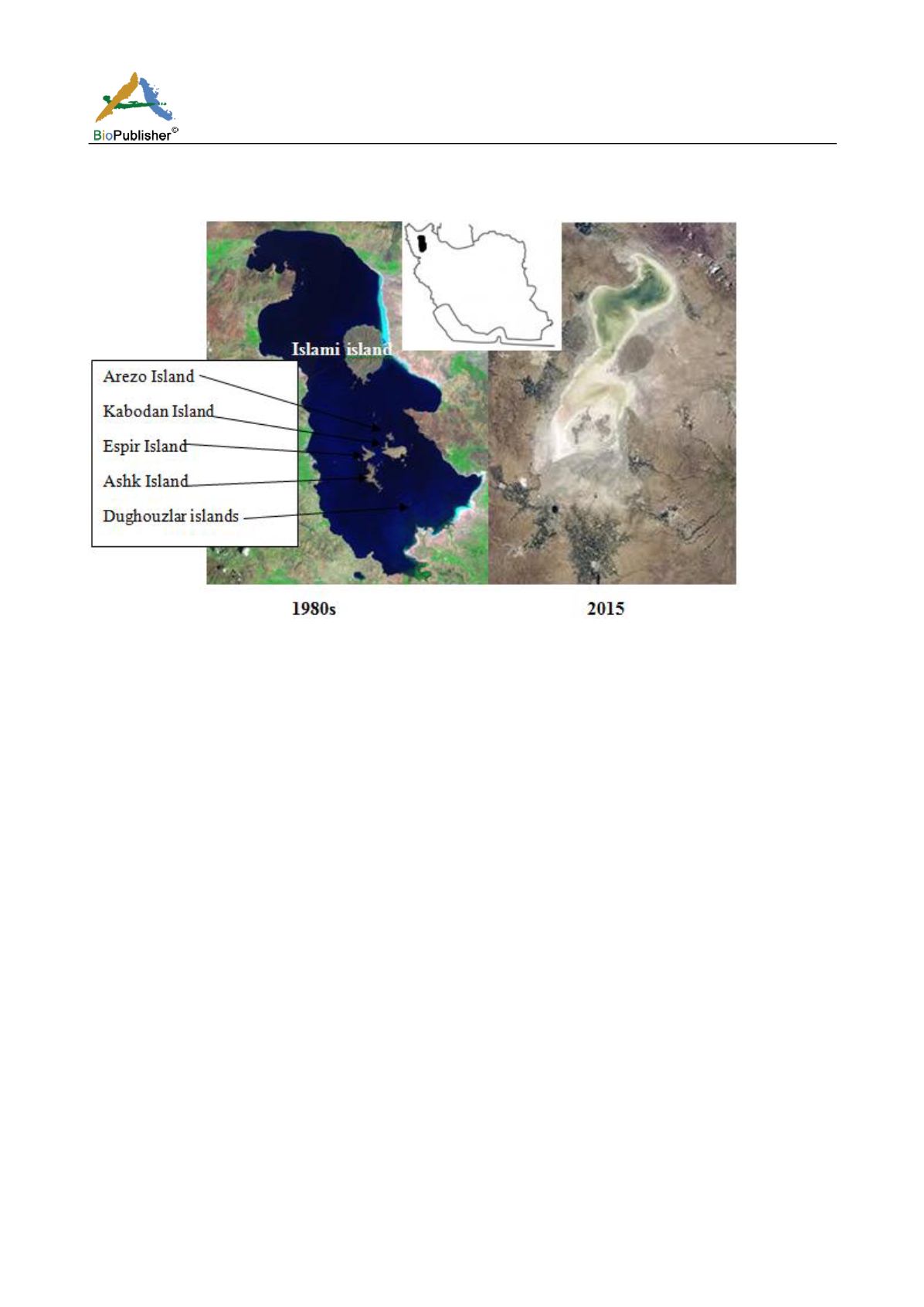
International Journal of Marine Science 2016, Vol.6, No.43, 1-13
2
were not seen in 2015 (tables 1, 2, 3 and 4). The aim of this study was to demonstrate, the effect of drying of lake
on waterfowl breeding population and bird's species number variation in Lake Uromia.
Fig1: Lake Uromia in 1980s and 2015 (Google earth, 2015)
Methods and Materials
Study Area
The Lake Uromia lies at 1280 m and located at
37
o
30'N45
o
30'E
in a large internal drainage basin in western
Azarbaijan Province, 60 km southwest of Tabriz (Dep. of Environment of West Azarbaijan, 2015, Evans 1994,
scott. 1995). Area of the lake was 483000 hectare in normal condition (Dep. of Environment of West Azarbaijan,
2015). There are 102 small and large islands, the smallest island is Angoushte Osman with area less than 5 m
2
and
the largest one is Kabodan with area 3125 ha in a large, shallow, hyper saline lake. Also there is extensive fringing
brackish to saline marshes, in a large internal drainage basin in the uplands of northwestern Iran (Scott 1995). The
lake was of great importance as a breeding area for many species of waterbirds, notably
Phoenicopterus ruber
,
Pelecanus onocrotalus
,
Larus genei, Larus armenicuss
and
Tadorna tadorna
, and staging area for migratory
species in spring and autumn, (Scott 1995 and 2001, Evans 1994). The lake is protected as a National park,
Ramsar Site, Biospher Reservior and Important Bird Area (Evans 1994 Scott 1995, Behrouzi-Rad 2001, Dep. of
Environment West Azarbayjan 2015). The average depth of lake was about 5 meter in 1980 (Dep. of Environment
of West Azarbaijan, 2015), but in 2015, south part of the lake was dried complete and north part was less than one
meter(Jaica 2015). Salinities range from 80 to 280 in 1980, but in 2015 it was 540 p.p.t. (Dep. of West Azarbaijan,
2015, Jaica 2015). There was a buildup brine shrimp
Artemia uromiana
, during the wet years, but in 2015 the lake
was devoid of
Artemia uromiana
. The lake is too saline to support any plants or animals. The shoreline vegetation
was dominated by species of
Atriplex sp, Frankenia sp
and
Suaeda sp
. The marshes at the south of lake have
typical saltmarsh plant communities with
Juncus sp
, some
Phragmites australis
at river mouths, and occasional
stand of
Tamarix sp
. remnant stands of
Pistashia atlantica
woodland survive on the larger islands, notably
Kabodan, and Ashk (Scott 1995, Evans 1994). Other conspicuous plants on the larger islands include
Ramnus
pallasii
, Artemisia sp, Dianthus sp, Cerasseus sp, Ephedra sp, Hordeum sp,
and
Bromus sp
.
Birds Count Method
Breeding population of waterbirds and species number of all birds was counted by total count method on January


